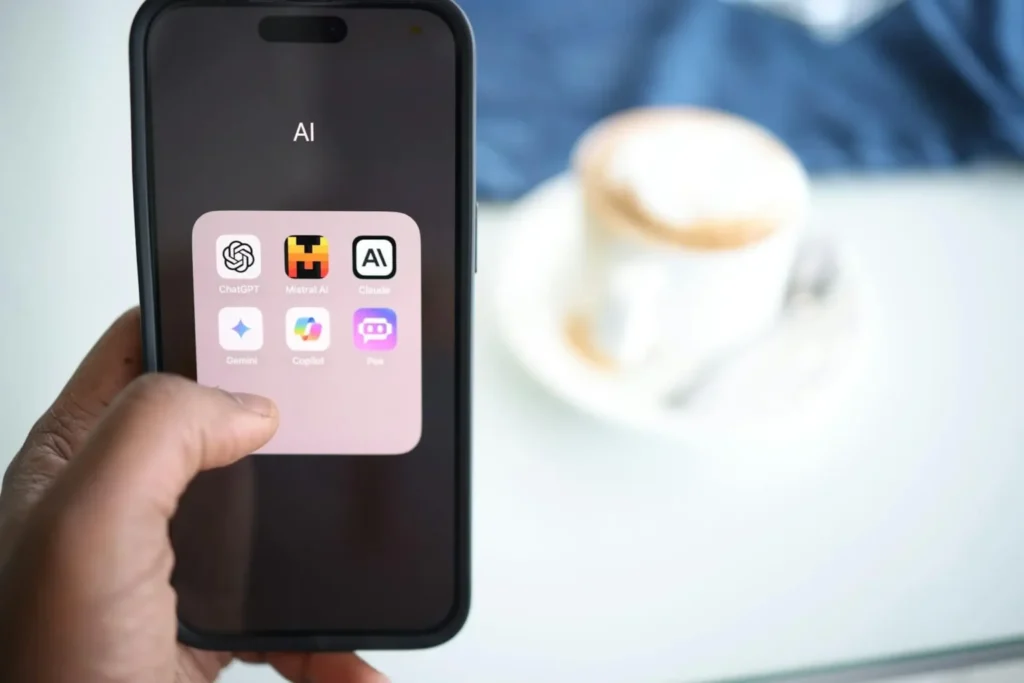AI evokes various reactions in employees. They’re either excited by the efficiency it can create or fearful of replacement. Now pair that with the implementation of an AI training program in the office. You may hear audible sighs as many assume that the workshops needed to ramp up AI skills mean having to work overtime or, at the very least, over your lunch hour.
Fear not, as it doesn’t have to be that way. Effective AI training for your employees can fit seamlessly into the workday. You can still lead a productive session while preserving morale and honoring breaks. The result? Empowering your team with the tools to succeed.
In this post, you’ll discover how to build a pragmatic, sustainable AI training program that respects boundaries while fostering innovation. We’ll explore how structured micro-learning, smart scheduling, reward incentives, and collaborative environments can be used for the best results.
Why AI Workshops Are Vital in Today’s Business World

Hosting AI empowering workshops is essential for building a confident, future-ready team. These sessions give employees hands-on experience with AI tools, helping them see practical ways technology can simplify tasks and boost productivity.
More than just skill-building, workshops foster a shared understanding of your company’s AI strategy, ensuring everyone moves in the same direction. They also break down fears or misconceptions about AI, replacing uncertainty with curiosity and enthusiasm.
Creating a collaborative learning space will encourage knowledge sharing, AI collaboration, and innovation without overwhelming staff. This will cultivate a strong foundation for your business on which it can adapt quickly in a competitive, tech-driven marketplace.
Below is a step-by-step process to create an AI strategy that elevates and does not exhaust.
1. Start with Clear, Focused Objectives
Begin by defining why you want AI training for your employees. Is it to simplify customer workflows, explore new marketing insights, ramp up productivity, or innovate product development?
Clear goals let you design targeted sessions instead of overloading employees with generic training. Aim for three to five concise priorities. For example:
- Mastering AI-driven email personalization
- Automating internal reporting with AI tools
- Leading AI-powered brainstorming sessions
By linking your AI strategy to real results, the AI training for employees stays purposeful and time-effective. This clarity also helps you decide how long each module needs to be. More often than not, you’ll only need around 20–30 minutes per session.
2. Embrace Micro-Learning, Not Marathon Workshops
Burnout creeps in when training demands hours at a stretch. Instead, break your AI training for employees into digestible blocks:
- 5–10 minute pre-work videos employees can watch during breaks or while getting coffee
- 20–30 minute “power sessions” integrated into the workday – think 2 pm quick slot, not after hours
- Optional 10-minute review quizzes to reinforce key concepts
This approach boosts retention and avoids overload. Micro-learning empowers individuals to absorb AI insights steadily, without compromising work-life balance.
Scheduling these within normal hours signals real respect for your team’s time. It also sets a tone that learning is part of the work rhythm, not a burden.
3. Lean on AI Collaboration, Not Isolation
AI learning thrives when it’s a shared journey, not a solitary task.
Pair employees from different departments (like marketing and operations) to explore how AI tools can benefit both areas. Host engaging “Lunch & Learn” sessions where a new AI prompt or feature is introduced, and each participant shares one insight or application. Encourage ongoing idea exchange through shared whiteboards, dedicated Slack channels, or Teams groups for prompt-swapping and brainstorming.
This cross-functional approach sparks creativity and integrates AI knowledge seamlessly into the workday, all while keeping the experience lively and collaborative.
4. Sprinkle in Just-in-Time Training
Instead of front-loading all training, opt for just-in-time learning. This is when you release tips precisely when someone needs them.
Below are a few ways to do this:
- AI copy tools: When a marketer opens a copy generator, surface a 10–20 second micro-tip — “Try industry keywords, shorten your hook, or test two variants.” Immediate, actionable guidance boosts retention and output.
- Client reports: As a user builds a report, offer an in-app walkthrough to auto-generate charts, suggest data sources, or show prompt templates. This reduces friction and saves time.
- Trigger nudges: Contextual reminders (tooltips, short videos, or quick templates) make learning part of the workflow, cut standalone training hours, and increase real adoption.
Integrating learning moments right where work happens eliminates stand-alone training time. And because these snippets are bite-sized and relevant, they feel like friendly nudges, not more obligations.
5. Collect Feedback & Iterate
Even the best training programs need ongoing refinement. After each module or session, gather quick, targeted feedback by asking questions like, “Was this helpful? Too long? Too technical?” Using simple tools like pulse surveys or “thumbs up/down” polls on Slack makes it easy for your team to share their thoughts.
Pay close attention to patterns. If many feel overwhelmed midweek, consider moving sessions to earlier in the week or reducing content during busy periods. Regularly collecting and acting on feedback creates a flexible AI strategy that evolves with your team’s needs.
This continuous loop not only improves learning effectiveness but also shows employees that their time and energy are respected and valued.
6. Reward Rest & Reinforce Balance
One of the best ways to keep training from bleeding into overtime? Publicly reward breaks and downtime.
Try these:
- Share “Recharge Wins” on internal channels: “Shoutout to Jane for closing her learning block, logging off, and coming back recharged.”
- Host short, optional “AI coffee chats” under 15 minutes – strictly during natural pause points, not overlapping existing work.
- Discourage replying to training-related notifications before 9 am or after 6 pm unless urgent.
These simple cultural nudges send a clear message: we’re learning about AI and protecting well-being.

Ready To Become an AI-First Business?
Balancing innovation and well-being is smart leadership. And, through the design of an AI training program that embeds micro-learning, peer collaboration, just-in-time tips, and respectful pacing, your AI strategy becomes both powerful and humane.
Your team doesn’t need to work overtime or skip lunch to lead with AI. Instead, they can learn within their flow, feeling both energized and supported. That’s how you build real transformation: one thoughtful, time-centered moment at a time.
Ready to hop on the bandwagon and empower your team? Raj Goodman has the resources to help you thrive. Check out his services or contact him today to learn more.
Recent Posts
-
November 28, 2025
-
October 15, 2025
-
September 17, 2025







